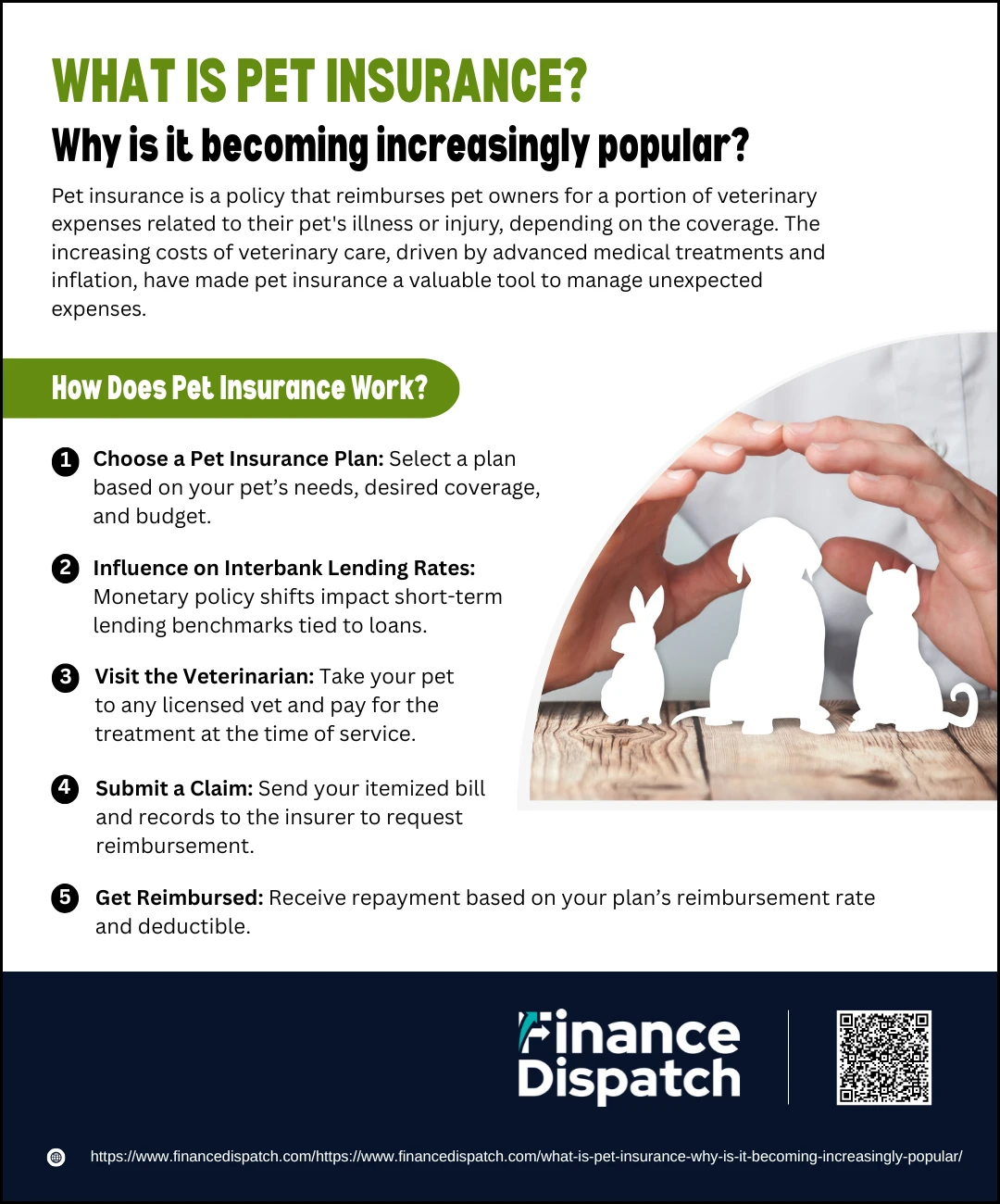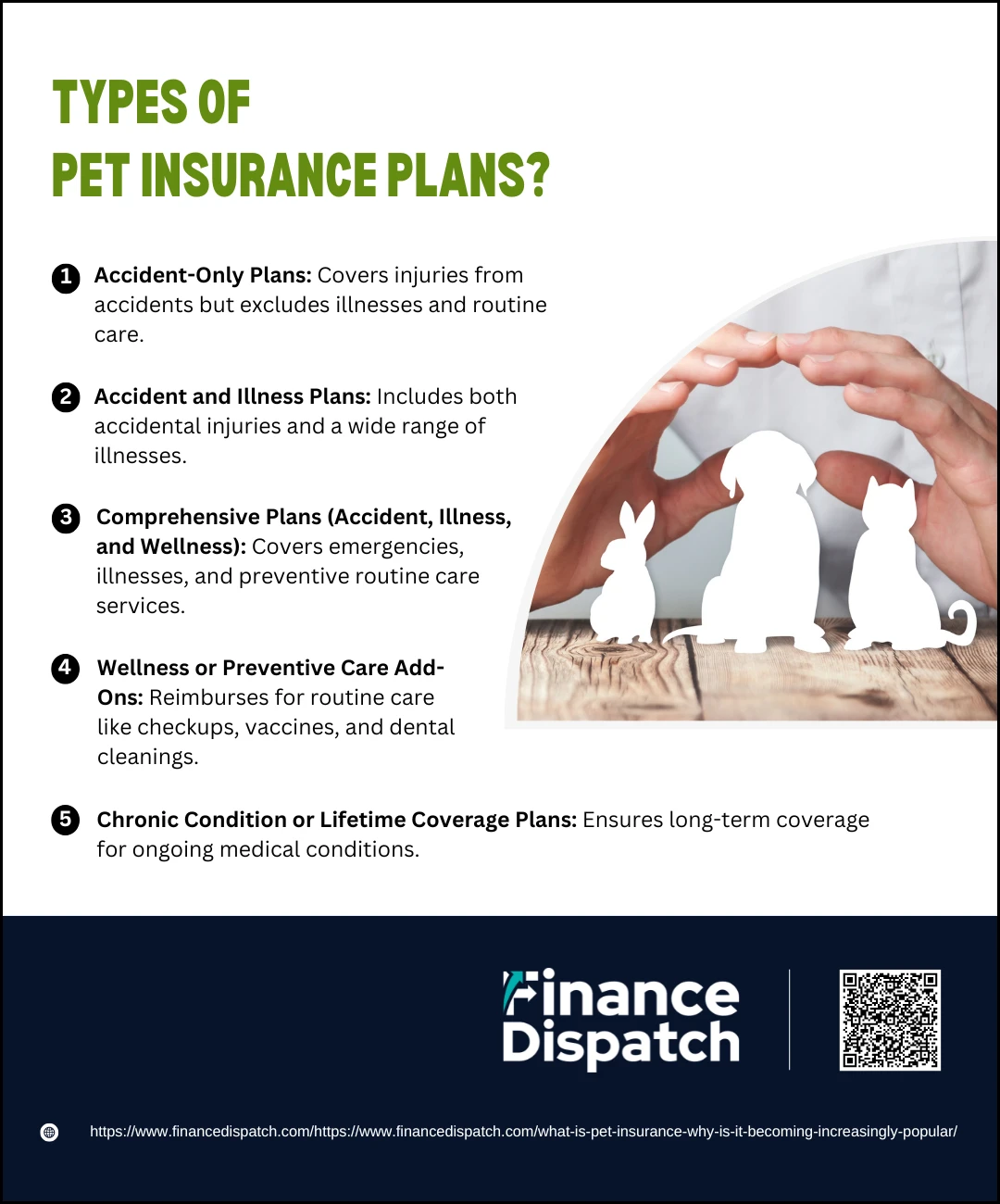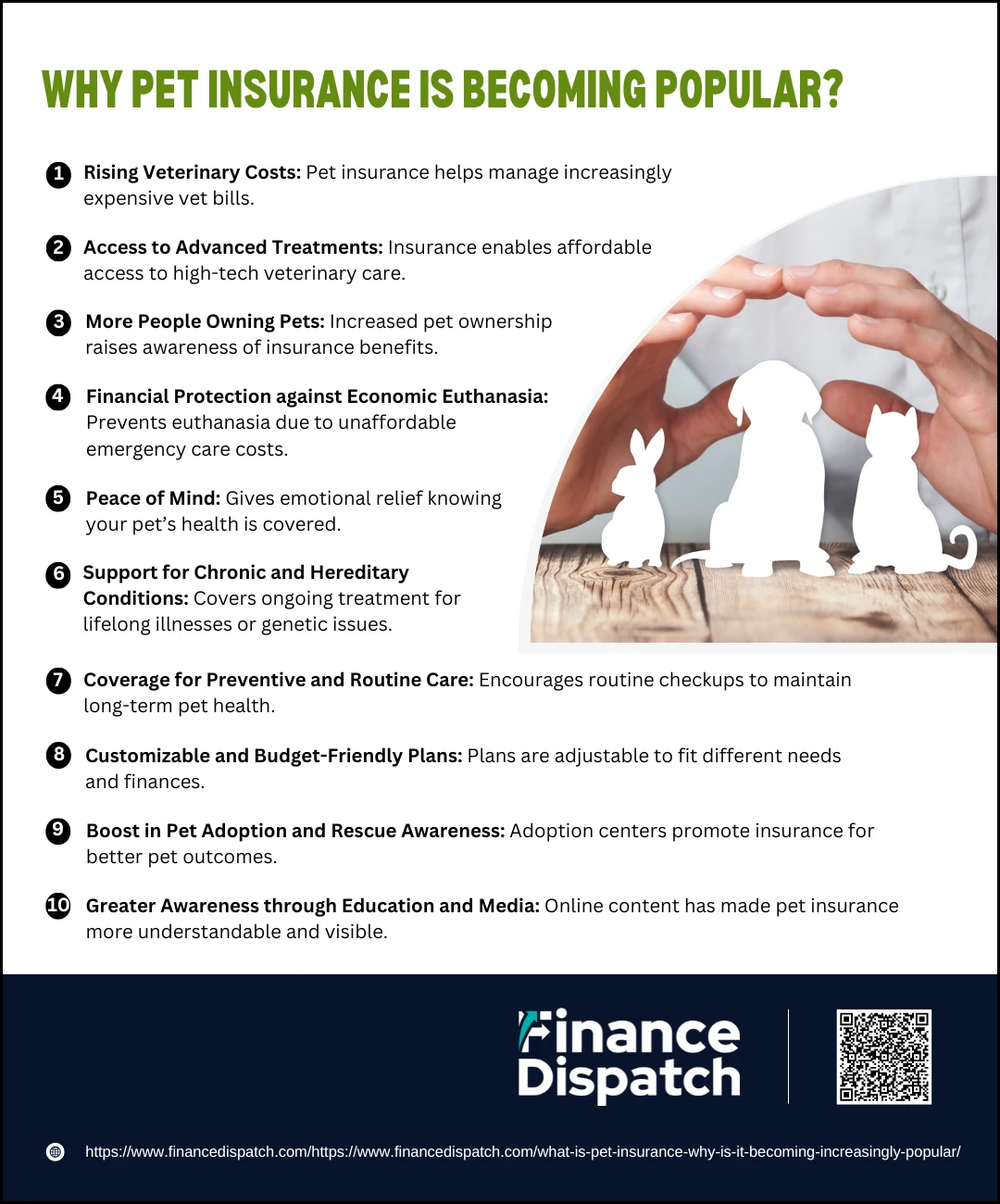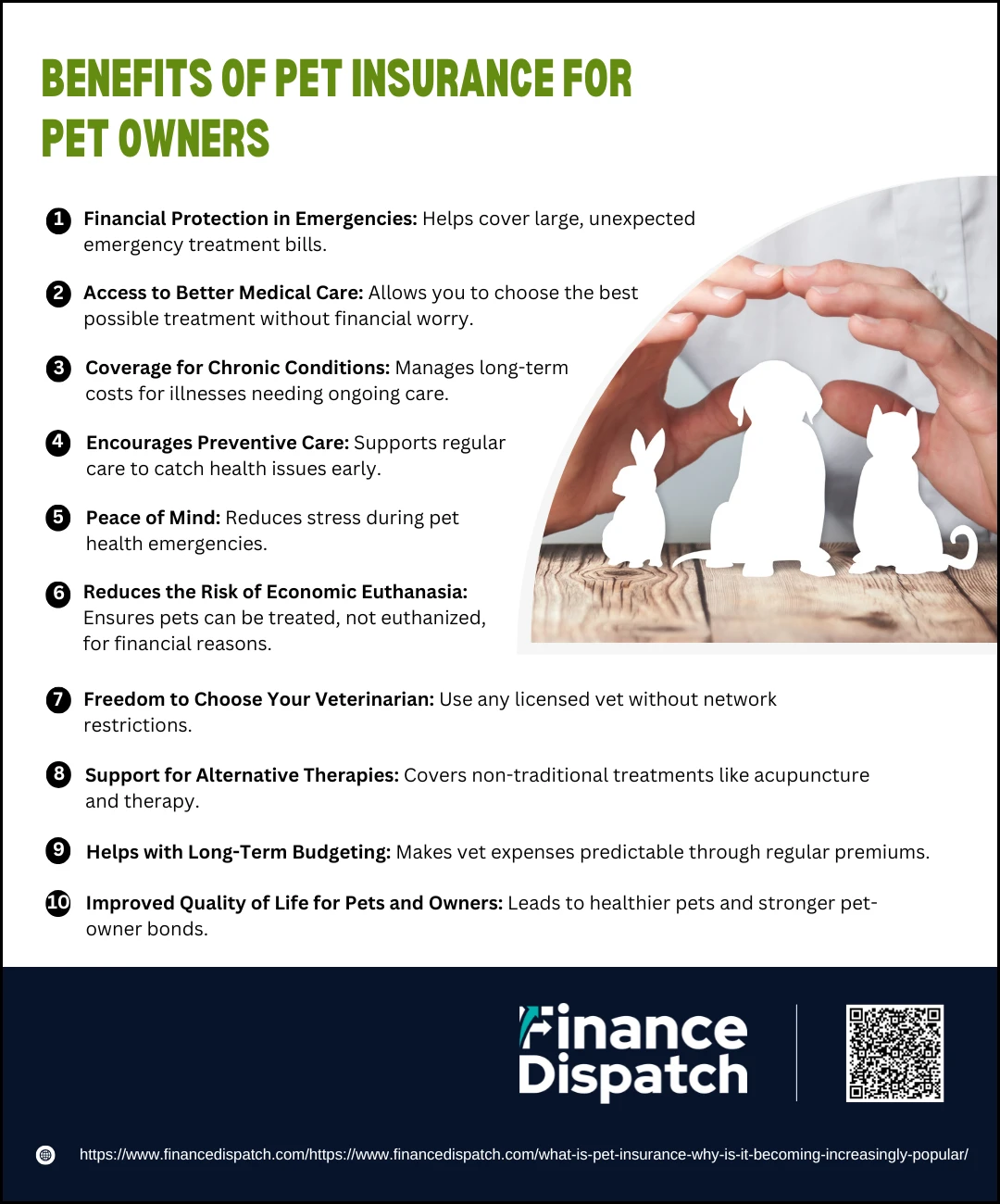Pet ownership brings joy, companionship, and unconditional love—but it can also come with unexpected and often costly medical bills. As veterinary care becomes more advanced and expensive, many pet owners are turning to pet insurance as a practical solution to safeguard their furry companions’ health without breaking the bank. Pet insurance, once a niche product, is now gaining widespread popularity for its ability to ease financial burdens during emergencies and ensure pets receive the care they deserve. In this article, we’ll explore what pet insurance is, how it works, and why more and more owners are seeing it as an essential part of responsible pet care.
What is Pet Insurance?
Pet insurance is a type of policy designed to help cover the cost of veterinary care for your pets, much like health insurance does for humans. It typically reimburses you for a portion of medical expenses related to accidents, illnesses, surgeries, and sometimes even routine wellness visits, depending on the plan. With pet insurance, you pay a monthly or annual premium, and in return, you gain financial protection against unexpected vet bills. Most plans involve paying the vet upfront and then submitting a claim to the insurance provider for reimbursement. This allows pet owners to make healthcare decisions based on their pet’s needs rather than their immediate financial situation.
 How does Pet Insurance Work?
How does Pet Insurance Work?
Pet insurance helps pet owners manage the often unpredictable and expensive costs of veterinary care. Unlike human health insurance, which usually pays healthcare providers directly, pet insurance typically works on a reimbursement model. This means you pay the vet upfront, then file a claim with your insurance provider to get part of that cost back. Policies vary in what they cover—some include only accident-related injuries, while others extend to illnesses, chronic conditions, and even routine care if you add wellness coverage. Understanding the full process is key to making the most of your policy and ensuring your pet gets the best care possible without causing financial strain.
Here’s a step-by-step breakdown of how pet insurance usually works:
1. Choose a Pet Insurance Plan
Start by comparing different pet insurance providers. You’ll want to select a plan based on your pet’s age, breed, health condition, and your financial preferences. Decide on key features such as the type of coverage (accident-only, accident and illness, or comprehensive with wellness add-ons), the deductible amount, reimbursement rate, and annual benefit limit.
2. Pay Monthly or Annual Premiums
To maintain coverage, you’ll pay a regular premium—either monthly or annually. Premium amounts vary based on your selected plan and your pet’s risk profile. Generally, the more comprehensive the coverage, the higher the premium.
3. Visit the Veterinarian
When your pet needs medical attention, you can take them to any licensed veterinarian. Most insurance plans allow you to use any vet, giving you flexibility. You’ll be responsible for paying the bill at the time of service.
4. Submit a Claim
After your pet’s appointment, you’ll need to submit a claim to your insurance company. This usually involves uploading an itemized invoice, proof of payment, and any requested medical records via the insurer’s website, mobile app, or by email.
5. Get Reimbursed
Once your claim is reviewed and approved, the insurance provider will reimburse you based on your plan’s terms. For example, if you have an 80% reimbursement rate and a $500 bill, you’ll get $400 back—after your deductible has been met. Reimbursements typically arrive within 5 to 10 business days.
 Types of Pet Insurance Plans
Types of Pet Insurance Plans
Not all pet insurance plans are created equal. Depending on your pet’s age, breed, lifestyle, and health history, the type of coverage you choose can significantly impact the quality of care your pet receives—and how much you end up paying out of pocket. Pet insurance plans typically fall into a few categories, each offering varying levels of protection and reimbursement. Understanding the differences between these plans is essential for making a smart and cost-effective decision that fits both your pet’s needs and your budget.
Here are the main types of pet insurance plans:
1. Accident-Only Plans
These are entry-level policies that cover only unexpected injuries and emergencies caused by accidents—such as broken bones, lacerations, ingestion of toxic substances, or being hit by a vehicle. They’re generally the most affordable option and are ideal for young, healthy pets or owners looking for minimal coverage. However, they do not cover illnesses or routine veterinary care.
2. Accident and Illness Plans
This is the most common and widely recommended type of pet insurance. It includes everything in an accident-only plan plus coverage for a range of illnesses—such as infections, digestive issues, cancer, arthritis, and hereditary conditions. These plans usually cover diagnostic tests, hospitalization, surgeries, and prescribed medications. They offer more comprehensive protection but come with higher premiums compared to accident-only plans.
3. Comprehensive Plans (Accident, Illness, and Wellness)
Sometimes referred to as full-coverage or total-care plans, these policies combine accident and illness coverage with preventive and routine care. This may include annual exams, vaccinations, dental cleanings, parasite control, microchipping, and spay/neuter procedures. While these plans have the highest premiums, they offer peace of mind by covering both the unexpected and the expected aspects of pet care.
4. Wellness or Preventive Care Add-Ons
Many insurers offer wellness coverage as a rider or optional add-on to a main policy. These do not cover emergencies or illnesses but instead reimburse for preventive services like vaccinations, wellness exams, flea/tick and heartworm prevention, grooming, and dental checkups. They’re great for pet owners who want help managing regular care costs and maintaining their pet’s long-term health.
5. Chronic Condition or Lifetime Coverage Plans
Some plans are specifically designed to offer ongoing coverage for chronic or long-term conditions that require consistent care—like diabetes, allergies, epilepsy, or kidney disease. These plans ensure that as long as you keep the policy active, treatment for those conditions will continue to be covered each year. This type of coverage is crucial for pets diagnosed with ongoing illnesses and can save significant money over the pet’s lifetime.
 Why Pet Insurance is Becoming Popular
Why Pet Insurance is Becoming Popular
Pet insurance has quickly evolved from a niche offering into a mainstream necessity for many pet owners. With more households treating pets as beloved family members, the willingness to invest in their health has grown substantially. At the same time, advancements in veterinary medicine have introduced a range of life-saving treatments—many of which come at a high price. As a result, pet owners are increasingly seeking out pet insurance as a way to manage these costs without compromising on care. The growing demand reflects both practical concerns about affordability and a deeper emotional commitment to ensuring pets live long, healthy lives.
Here are the main reasons why pet insurance is gaining popularity:
1. Rising Veterinary Costs
Veterinary care has become more sophisticated—and more expensive. Emergency surgeries, specialist consultations, and diagnostic imaging can cost thousands of dollars. Pet insurance helps soften the blow by reimbursing a large portion of these unexpected expenses.
2. Access to Advanced Treatments
Just like in human healthcare, pets now have access to high-tech medical options such as chemotherapy, MRIs, orthopedic surgery, and even organ transplants. Insurance makes these treatments financially feasible for the average pet owner.
3. More People Owning Pets
Pet ownership has surged, particularly during the pandemic as people sought companionship. With more pets in homes, there’s greater awareness of the responsibilities—and potential medical expenses—that come with pet care.
4. Financial Protection against Economic Euthanasia
Some pet owners face the painful decision to euthanize their pet because they can’t afford emergency treatment. Insurance helps prevent this scenario by offering financial support when it’s needed most, allowing pets to receive life-saving care.
5. Peace of Mind
Knowing you won’t have to choose between your pet’s well-being and your bank account brings peace of mind. Pet insurance provides emotional relief in stressful situations, making it easier to focus on your pet’s recovery.
6. Support for Chronic and Hereditary Conditions
Many insurance plans now cover long-term treatments for conditions like diabetes, arthritis, epilepsy, or allergies—especially valuable for breeds prone to genetic health issues.
7. Coverage for Preventive and Routine Care
Wellness plans help cover routine expenses like vaccinations, checkups, flea/tick prevention, and dental cleanings. This encourages preventive care and reduces the risk of severe illnesses down the line.
8. Customizable and Budget-Friendly Plans
Pet insurance providers now offer flexible plans with adjustable deductibles, reimbursement rates, and annual limits. This allows owners to choose coverage that matches their pet’s needs and their financial situation.
9. Boost in Pet Adoption and Rescue Awareness
Many shelters and rescue organizations now promote pet insurance during adoption. This not only helps new pet owners understand the benefits but also improves long-term outcomes for rescued animals.
10. Greater Awareness Through Education and Media
The rise of social media, pet care blogs, and veterinary endorsements has helped demystify pet insurance. More owners are now educated about their options and the benefits of having coverage in place.
 Benefits of Pet Insurance for Pet Owners
Benefits of Pet Insurance for Pet Owners
Caring for a pet is a deeply rewarding experience, but it also comes with its share of unexpected challenges—especially when it comes to healthcare costs. Vet bills for emergencies, surgeries, and long-term illnesses can quickly add up, creating emotional and financial stress for pet owners. This is where pet insurance becomes invaluable. It acts as a safety net that not only provides financial relief but also ensures your pet receives timely and appropriate care. With more owners viewing pets as family members, the benefits of pet insurance go far beyond just cost savings—it offers peace of mind, better health outcomes, and long-term stability in pet care.
Here are the top benefits of pet insurance for pet owners:
1. Financial Protection in Emergencies
Veterinary emergencies—such as accidental injuries, poisoning, or sudden illnesses—can cost thousands of dollars. Pet insurance helps offset these costs, preventing you from dipping into savings or going into debt during a crisis.
2. Access to Better Medical Care
With insurance coverage, you’re less likely to settle for cheaper or less effective treatments. You can afford the best possible options for diagnostics, surgery, medications, or specialist care, giving your pet the highest chance of recovery.
3. Coverage for Chronic Conditions
Conditions like diabetes, epilepsy, or arthritis often require ongoing medication, frequent checkups, and specialized treatments. Pet insurance can cover these recurring expenses, making it easier to manage your pet’s long-term health.
4. Encourages Preventive Care
Many insurers offer wellness plans that reimburse for routine care such as vaccines, flea and tick prevention, dental cleanings, and annual exams. These preventive services help catch health issues early—before they become serious and expensive.
5. Peace of Mind
One of the biggest benefits is emotional security. Knowing that your pet’s medical needs are covered helps you remain calm and focused during stressful times, and allows you to act quickly in the best interest of your pet.
6. Reduces the Risk of Economic Euthanasia
One of the harshest realities for pet owners is facing a large medical bill they can’t afford. Pet insurance can help avoid this tragic scenario by covering the bulk of treatment costs, ensuring your pet can be treated rather than put down for financial reasons.
7. Freedom to Choose Your Veterinarian
Most pet insurance providers do not limit you to a network. You can take your pet to any licensed veterinarian, emergency animal hospital, or specialist of your choice—at home or even while traveling.
8. Support for Alternative Therapies
Some plans include or allow add-ons for alternative treatments such as acupuncture, hydrotherapy, laser therapy, or behavioral training. These services can improve recovery, mobility, and quality of life, especially for older pets.
9. Helps with Long-Term Budgeting
Instead of worrying about unpredictable vet bills, you pay a regular premium that allows you to plan your finances more effectively. This stability makes it easier to manage household expenses without compromising your pet’s care.
10. Improved Quality of Life for Pets and Owners
When you’re able to provide consistent, high-quality care for your pet, their overall health improves—and so does your relationship with them. Fewer health emergencies, better preventive care, and emotional peace lead to a happier life for both of you.
The Rising Cost of Veterinary Care
Veterinary care has come a long way in recent years, offering advanced treatments and technology that can significantly improve pets’ lives. However, this progress comes at a cost. Routine visits, emergency care, and specialized procedures are now more expensive than ever, making it increasingly difficult for many pet owners to keep up. Whether it’s a simple checkup or a complex surgery, the financial burden can be overwhelming—especially when unexpected health issues arise. Understanding the average costs involved helps highlight why pet insurance is becoming a vital safety net for responsible pet owners.
Here’s a look at some common veterinary costs:
| Type of Veterinary Service | Estimated Cost (USD) |
| Routine Check-Up | $50 – $250 |
| Emergency Exam | $100 – $200 |
| Overnight Hospital Stay | $1,000 – $2,000 |
| Vaccinations (Annual) | $75 – $150 |
| Blood Tests | $80 – $200 |
| Dental Cleaning | $300 – $700 |
| X-rays | $150 – $250 |
| Surgery (Minor) | $500 – $2,000 |
| Surgery (Major/Emergency) | $3,000 – $7,000+ |
| Chemotherapy or Cancer Treatment | $3,000 – $10,000+ |
| Monthly Preventive Medications | $30 – $60 |
What Pet Insurance Covers — and What It Doesn’t
Pet insurance can be a financial lifesaver when your pet faces an unexpected illness or injury. However, like any insurance policy, coverage varies depending on the provider and plan type. Most pet insurance policies cover a wide range of services, especially when it comes to emergencies, surgeries, and medications. But they often exclude certain routine or pre-existing conditions. Understanding what’s typically included—and what’s not—can help you choose a plan that meets your pet’s needs without surprises at claim time.
Here’s a breakdown of common inclusions and exclusions in pet insurance policies:
| Typically Covered | Typically Not Covered |
| Accidents and injuries (e.g. fractures, cuts) | Pre-existing conditions |
| Illnesses (e.g. cancer, diabetes, infections) | Routine check-ups (unless wellness add-on is included) |
| Surgeries and hospitalization | Spaying and neutering (unless included in wellness plan) |
| Prescription medications | Vaccinations (unless wellness plan is added) |
| Diagnostic tests (e.g. X-rays, blood work, MRIs) | Cosmetic or elective procedures |
| Emergency care and exam fees | Pregnancy and childbirth |
| Chronic conditions (covered under accident & illness plans) | Preventable diseases (e.g. if pet was not vaccinated) |
| Specialist visits (e.g. oncology, dermatology) | Grooming and bathing |
| Alternative therapies (if included in policy) | Bilateral conditions (e.g. both knees, if one was injured) |
Is Pet Insurance Worth It?
Deciding whether pet insurance is worth it depends on your pet’s health, age, breed, and your ability to handle unexpected veterinary expenses. For many pet owners, having insurance provides peace of mind and financial security, especially during emergencies or when facing costly treatments for chronic illnesses. While monthly premiums may seem like an added expense, they can ultimately save you thousands of dollars over your pet’s lifetime. Without insurance, a serious injury or illness could force you to choose between your pet’s well-being and your budget. For those who view pets as family, pet insurance is often considered a worthwhile investment in their long-term health and happiness.
Alternatives to Pet Insurance
While pet insurance offers valuable protection against unexpected veterinary expenses, it’s not the only option for managing your pet’s healthcare costs. Some pet owners prefer more flexible or self-managed approaches, especially if their pets are young, healthy, or rarely require medical attention. Exploring alternatives can help you find a solution that fits your budget and comfort level while still ensuring your pet receives quality care when needed.
Here are some common alternatives to pet insurance:
1. Pet Savings Account: Set aside a specific amount each month in a dedicated savings account to cover future vet expenses. It allows you to build a financial cushion without paying premiums.
2. Veterinary Payment Plans: Many veterinary clinics offer in-house payment plans or financing options to help you spread the cost of expensive treatments over time.
3. Credit-Based Financing (e.g., CareCredit): Health-focused credit cards like CareCredit can be used for pet healthcare expenses and offer short-term interest-free periods if paid within a set time frame.
4. Discount Wellness Plans: Some veterinary offices offer their own wellness memberships that provide discounted rates on exams, vaccines, and preventive care for an annual fee.
5. Charitable Organizations and Pet Assistance Funds: Nonprofits and animal welfare groups sometimes provide grants or emergency funding for pet owners who can’t afford necessary treatments.
6. Crowdfunding: Platforms like GoFundMe are often used by pet owners to raise money for emergency surgeries or critical care when other resources are not available.
Conclusion
Pet insurance is no longer a luxury—it’s becoming a practical and often essential tool for responsible pet ownership. As veterinary costs continue to rise and medical treatments become more advanced, having insurance can make the difference between delaying care and getting your pet the help they need right away. From protecting your finances during emergencies to encouraging regular preventive care, the benefits of pet insurance are both financial and emotional. Whether you choose a full-coverage plan or explore alternative solutions, planning ahead for your pet’s health ensures they receive the best possible care—while giving you peace of mind every step of the way.



